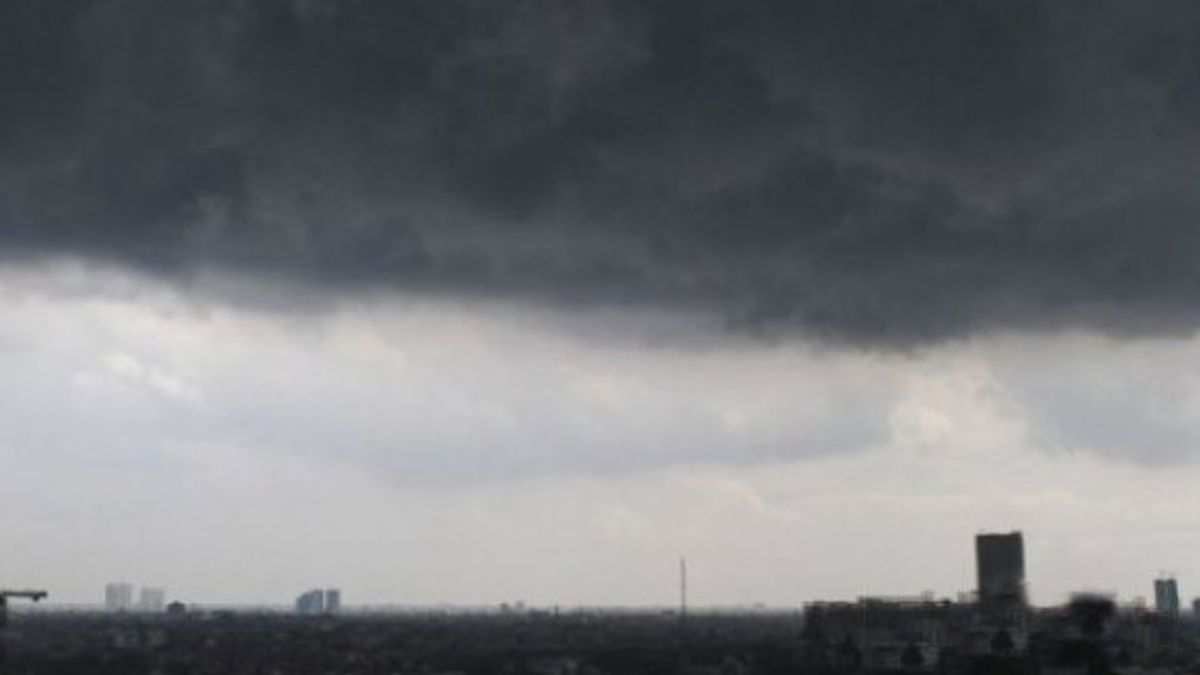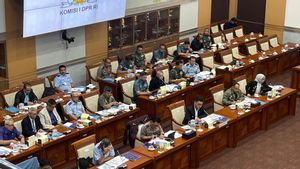JAKARTA - The Meteorology, Climatology, and Geophysics Agency (BMKG) explained that the strong winds in recent times were caused by the formation of Cumulonimbus clouds, which have been quite intensive in recent weeks. Strong winds are sometimes accompanied by moderate to heavy rain.
"From the analysis of the latest atmospheric dynamics in the last few days, the formation of Cumulonimbus clouds is quite intensive, especially in the western and southern parts of Java, with quite massive cloud formation occurring in the afternoon until the evening, where the convection process in the ocean is quite dominant," said the Prediction Coordinator. and Miming Saepudin BMKG Weather Early Warning in a written statement quoted by Antara, Saturday, February 5.
He said that in the next week, the potential for Cumulonimbus cloud growth is still quite high, such as in central and southern Sumatra, the west coast of Sumatra, most of Java, West Nusa Tenggara, East Nusa Tenggara, and northern and eastern Kalimantan.
Head of the BMKG Weather Early Warning Sub Division, Agie Wandala, said that the formation of wind was basically due to the difference in air pressure in the two locations. This pressure difference generally occurs due to temperature differences.
The difference in temperature between the sea and land causes a pressure difference that triggers wind flow. The greater the pressure difference, the stronger the wind that generally occurs on the surface.
"Apart from the large difference in air pressure, strong winds can also be generated from Cumulonimbus clouds. Strong winds from these Cumulonimbus clouds can be in the form of hurricanes or strong winds commonly known as downbursts," he said.
He explained that a downburst occurs when the air condensing at the top of the cloud falls, carries a lot of air quickly, and spreads when it reaches the ground, producing high-speed winds, reaching 160 km/hour.
The wind speed in this downburst can cause casualties, fallen trees, damage to building structures, and trigger plane crashes when landing, even if it is of short duration.
In early February, the phenomenon of destructive strong winds occurred in several parts of Indonesia, such as Subang Regency, West Java; Purbalingga Regency and Cilacap Regency, Central Java; Sleman Regency and Bantul Regency, DI Yogyakarta; and Bantaeng Regency, South Sulawesi. Strong winds had killed one person in Banjar City, West Java.
The English, Chinese, Japanese, Arabic, and French versions are automatically generated by the AI. So there may still be inaccuracies in translating, please always see Indonesian as our main language. (system supported by DigitalSiber.id)













